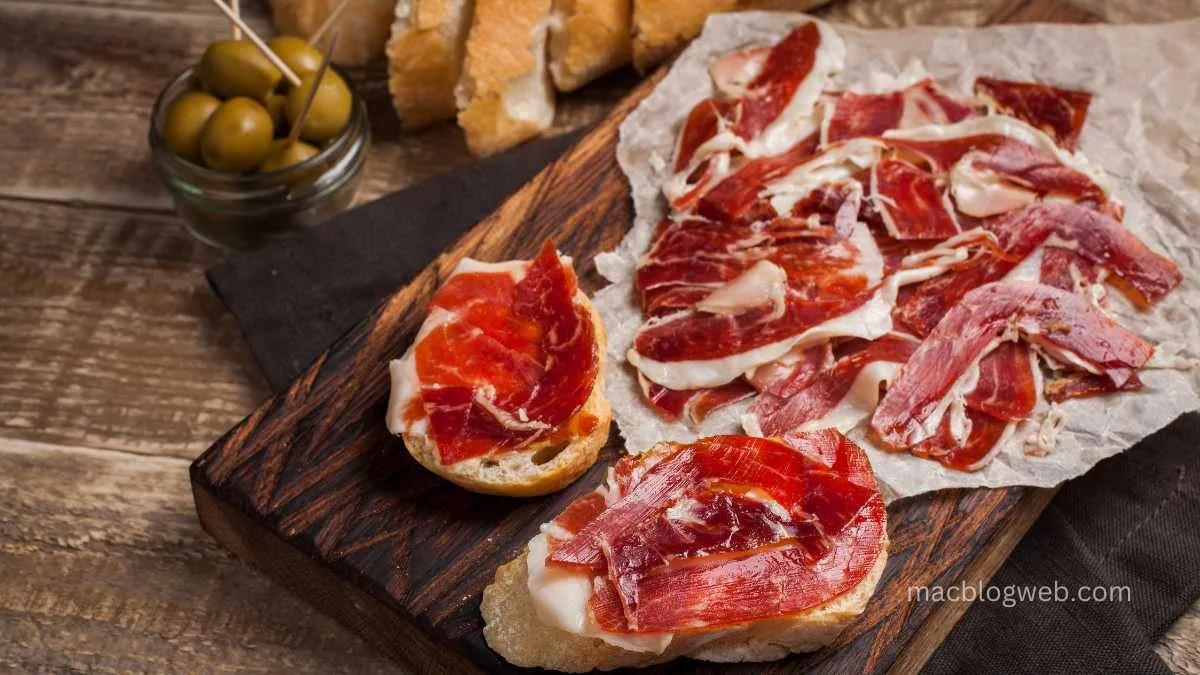Jamón, a term synonymous with the culinary prowess of Spain, stands as one of the most iconic and beloved delicacies in Spanish cuisine. Known internationally for its rich flavor and meticulous crafting process, jamón is more than just food—it’s a cultural symbol, deeply embedded in the fabric of Spanish society. This comprehensive article delves into the intricacies of jamón, from its historical roots to its production processes, varieties, and culinary uses.
Historical Background
The tradition of curing ham has ancient roots in Spain, likely dating back to the Roman Empire. The practice was primarily a method of preserving meat before the advent of refrigeration. Over the centuries, these techniques were refined in the Iberian Peninsula, eventually evolving into the sophisticated curing processes used to produce today’s jamón.
The word “jamón” itself simply means “ham” in Spanish, encompassing various types of cured hams produced or consumed in Spanish-speaking countries. However, it is most famously associated with the specific styles of dry-cured hams made in Spain, particularly serrano and ibérico, each celebrated for its distinctive taste and texture.
Production and Curing Process
Jamón is made using the hind leg of a pig, which is cured through salting and a lengthy dry-aging process. The production of it involves several detailed steps:
- Selection and Preparation: The quality of it begins with the selection of the pig and its diet, which significantly impacts the flavor of the ham. The legs are cleaned and trimmed before curing.
- Salting: The fresh hams are buried in salt, which draws out moisture and begins the process of preservation. This stage lasts for about two weeks.
- Washing and Resting: After salting, the hams are washed to remove excess salt and then hung to rest in a cool, controlled environment. This resting period allows the flavors to begin developing.
- Curing: The longest phase of the process, curing can last from 12 to 36 months. The hams are hung in curing rooms where temperature and humidity are carefully controlled. Over time, the ham undergoes changes in texture and flavor, becoming firmer and more complex.
- Aging: Some premium types of jamón, especially ibérico, may undergo an additional aging process to further enhance their flavor.
Varieties of Jamón
The two most renowned types of jamón are serrano and ibérico:
- Jamón Serrano: Translating to “mountain ham,” jamón serrano is typically made from several breeds of white pigs, such as Duroc or Landrace. It is cured for at least 12 months, resulting in a firm texture and deep flavor. This type of jamón is more common and widely consumed within Spain.
- Jamón Ibérico: Often regarded as the pinnacle of Spanish hams, ibérico is made from the native black Iberian pig. These pigs are often free-range, feeding on acorns in the pastures of southwestern Spain. The acorn diet imparts a rich, nutty flavor to the fat, which is a hallmark of ibérico. Depending on the purity of the breed and the diet of the pigs, ibérico can be classified further into several grades, such as ibérico de bellota, the highest quality, which is cured for up to 36 months.
Culinary Uses
Traditionally, jamón is served in thin slices to fully highlight its rich flavors and textures. It’s a key component of tapas and pairs wonderfully with cheeses, fruits, and bread. In cooking, it can be used to enrich a variety of dishes, from stews and soups to salads, or even placed on top of cooked meals to add a savory, salty touch.
Conclusion
Jamón is not merely a food product; it is a profound expression of Spanish heritage and gastronomic tradition. Its meticulous production process, diverse varieties, and versatile culinary applications make jamón a treasured delicacy far beyond the borders of Spain. Whether enjoyed on its own, as part of a tapas selection, or used as an ingredient in cooking, it continues to be celebrated for its unparalleled quality and flavor, embodying the essence of Spanish cuisine.








